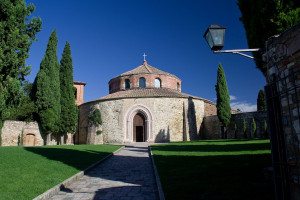
Built in an area always considered sacred, it is one of the most ancient paleo Christian churches in Italy (V-VI sec.) and the most ancient of the city. It has a circular floor plan, originally with four chapels arranged in a Greek cross, oriented according to the cardinal points. Light enters from twelve windows …
DETAILS
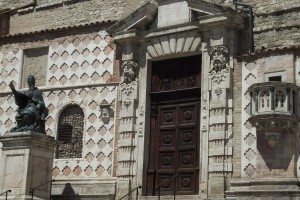
Built in the XV Century, finished in 1490, as a replacement for the earlier Romanesque cathedral. In 1729 to the unfinished façade a baroque portal was added, by Pietro Carattoli. On the left side, facing Piazza IV Novembre, a noteworthy entrance by Galeazzo Alessi of 1568; on the right of the door the pulpit, from …
DETAILS
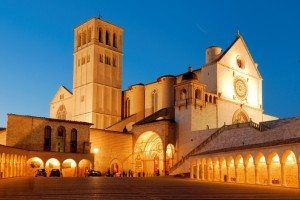
In Assisi, everything speaks of Francis and his message: the buildings covered in Sabasio’s pink stone give color to grey days and light up in the golden rays of sunset. Rather than visit the city in any particular order, lose yourself in the winding alleys which take you back to Francis’ youth. In Piazza del …
DETAILS
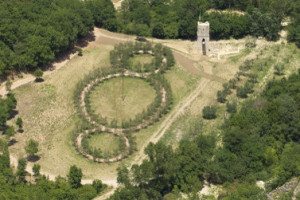
This magical wood, with a history spanning millenia, is a mystical spot, soothing to both the eyes and the spirit, where Saint Francis’ words come to life. To walk through Saint Francis’ Wood in Assisi is a unique experience, an inner journey through nature, history and faith to better understand the message of perfect harmony …
DETAILS
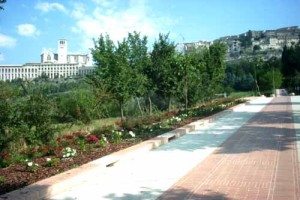
The “Seven Churches of Assisi” itinerary ends at the Basilica di Santa Maria degli Angeli, though it is ideal to complete the cycle by following the “mattonata” to the Basilica of Saint Francis, ascending to Assisi along the processional route used by the faithful for centuries, and by the participants of the interfaith conference convocated by Benedict …
DETAILS
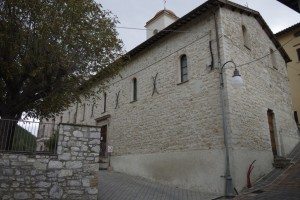
The Franciscan Sources contain a number of passages recounting how Francis was taken to this area to find comfort for his physical suffering through the mild climate and curative waters here. It was here that the knights of Assisi came to meet Francis, taking him back to die in his hometown, as he requested. Aside …
DETAILS
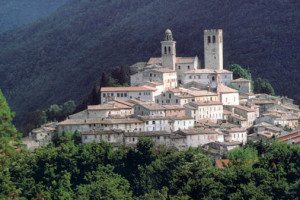
Saint Francis visited Nocera a number of times, as the city was at an important crossroads along the historic Via Flaminia towards Fano, and an alternative route for the March of Ancona. The saint was also friends with Saint Rinaldo, bishop during Francis’ life and now patron saint of Nocera. Rinaldo was one of the …
DETAILS
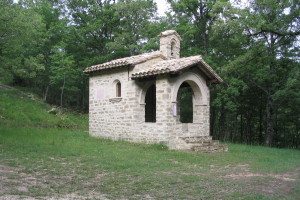
This tiny church was built in 1926 by the Compagnia dei Cavalieri on the site where the village of Satriano once stood. According to the Franciscan Sources, when the citizens of Assisi heard that Saint Francis was dying, they sent a delegation of knights to form a solemn procession, transporting the saint back to the …
DETAILS
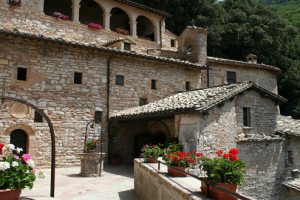
Mount Subasio was home to a number of hermits even before the time of Saint Francis; the saint and his brothers began to retreat to a small chapel and surrounding grottoes on this mountain around 1206. The oldest part of this convent dates from the middle of the 15th century; it was expanded to its …
DETAILS
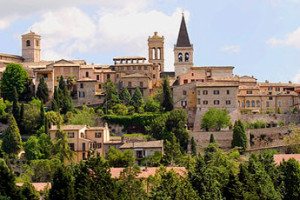
Spello blends its Medieval winding alleys and stone houses with a number of earlier Roman ruins, including the Porta Consolare (1st century B.C.), the Porta Urbica (or Porta San Ventura), and the Porta Venere—flanked by the two twelve-sided Torri di Properzio–from the Augustan age. The most important among its churches is Santa Maria Maggiore, dating from between the 12th and …
DETAILS
© FRANCESCO'S WAYS | Privacy Policy | Crediti
